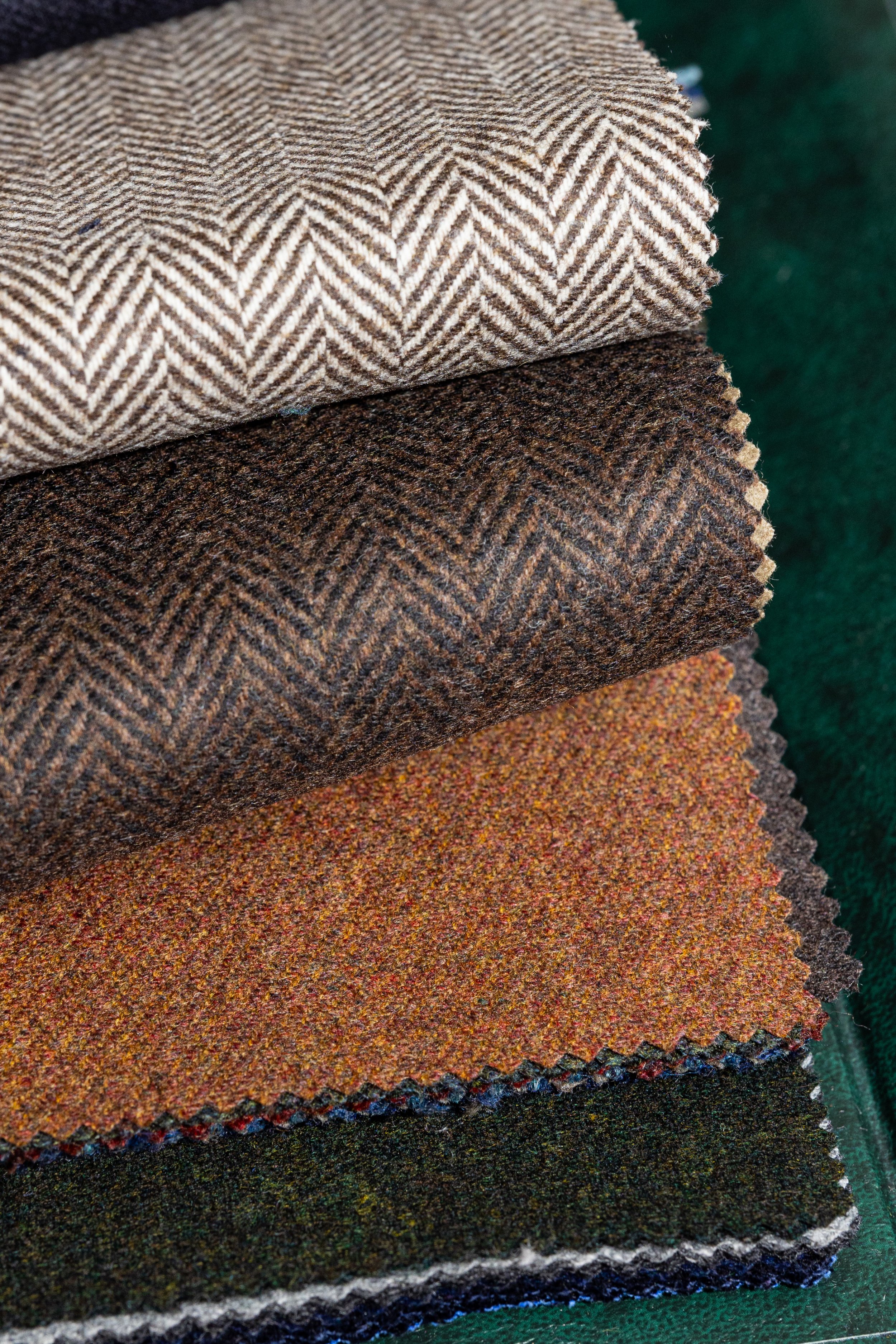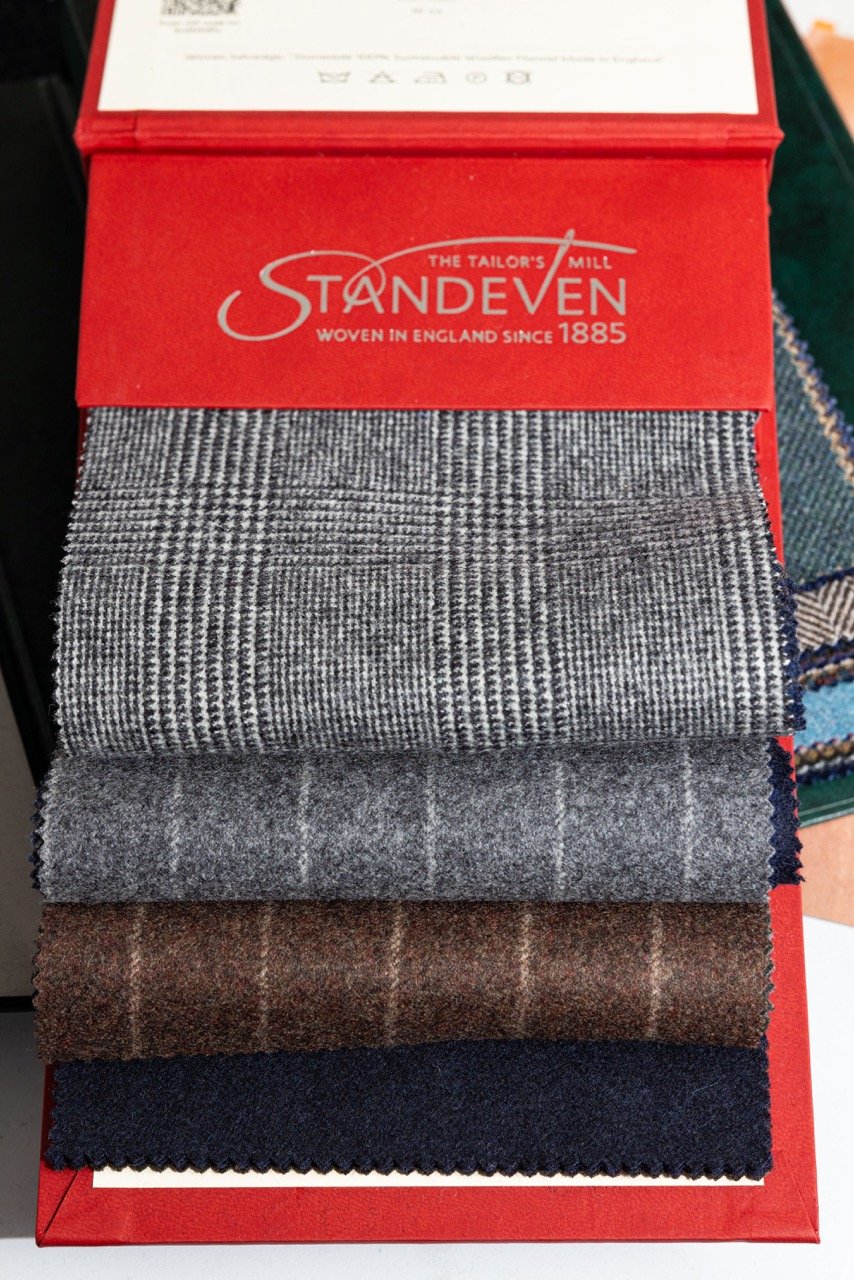The Best Suit Fabrics for Winter in Washington, DC
As winter approaches, it's essential to equip ourselves with the right attire to brave the cold. One crucial aspect of winter fashion is the selection of appropriate fabrics for suits. In this blog post, we will delve into the history of winter-weight fabrics in suitmaking and explore the best fabric options for staying stylishly warm in Washington, D.C.
If you’re looking for other style tips, check out our blog posts on suit trends for 2024 below
Men - https://www.capitolhillclothiers.com/style-guides/trending-suits-for-men
Women - https://www.capitolhillclothiers.com/style-guides/9-suit-trends-for-women-in-2024
The Historical Significance of Winter-Weight Fabrics:
Winter-weight fabrics have a long-standing tradition in men's and women’s tailoring. These fabrics were developed to provide insulation and protection against the biting cold during winter months. While there are various materials suitable for winter suits, let's explore two notable fabrics with rich histories:
Tweed
Tweed fabric has a rich history in suitmaking for both men and women. It emerged as a fashionable cloth in the early 19th century, gaining popularity thanks to the celebrity of Scotsmen like Sir Walter Scott and Lord Brougham. During this time, tweed was primarily used for outdoor garments, particularly in rural areas of Scotland and Ireland, where it was developed to withstand harsh weather conditions.
In the mid-20th century, tweed gained further recognition as a versatile fabric for both men's and women's suits. It was marketed as a sturdy and practical choice, especially during the Second World War when durability and functionality were highly valued. Tweed became associated with a sense of timeless elegance, and its distinctive patterns and textures added a touch of sophistication to tailored clothing.
Today, tweed remains a popular fabric in suitmaking, appreciated for its durability, warmth, and unique aesthetic. It has evolved into a genderless fabric, with both men and women embracing its classic appeal. From its humble origins in Scotland to its prominence on fashion runways, tweed continues to be an enduring symbol of sartorial style and craftsmanship in the world of suiting.
To learn more about one of the most notable names in tweed, Harris Tweed, check out our brand feature here - https://www.capitolhillclothiers.com/style-guides/harris-tweed
Flannel
Flannel fabrics also have a storied history in suitmaking. Flannel’s origins can be traced back to Wales in the 17th century when it was created as a replacement for plain wool garments. Originally made from carded wool (a process in which raw wool fibers are prepared for spinning by untangling and aligning them using a tool called a card, which helps to remove impurities) or worsted yarn (where fibers are first combed, leaving behind only the long and uniform strands, then tightly spun and twisted, resulting in a dense yarn with a smooth and lustrous surface), flannel was hand-spun and woven into fabric to supplement meager means in Welsh farmhouses. It offered warmth and comfort during cold seasons, making it a practical choice for clothing.
In the early 20th century, flannel made its way into mainstream fashion and became popular for making suits, pants, and shirts for both men and women. Its softness and versatility made it a sought-after fabric, particularly during the fall and winter seasons. Flannel suits exuded a sense of casual elegance and were appreciated for their insulating properties. Over time, flannel became synonymous with comfort and style, making it a staple fabric in suitmaking for various occasions.
The Best Suiting Fabrics for Winter in Washington, DC:
Now that we understand the historical significance of winter-weight fabrics, let's explore some of the best fabric options for winter suits in Washington, DC's chilly climate:
Wool
Wool remains an unbeatable choice for winter suits, thanks to its natural insulating properties. Look for heavier weights such as 300 grams or higher, which provide enhanced thickness, and therefore warmth. Opt for worsted wool for a sleek and refined look, or consider a wool-cashmere blend for added luxury and softness. Flannel, as mentioned above, is one of the most ideal wool types for winter suiting. It’s thick, supremely insulated, and has a wonderfully classic look.
Wool is one of the most common fabric bases, so the styling options are nearly unlimited. Whether you want a pinstripe or plain, windowpane or wild plaid, there is always going to be an option for you.
Cashmere
For those seeking the utmost in warmth and comfort, cashmere is a luxurious option. Known for its softness and lightweight feel, cashmere adds a touch of elegance to winter suits. Its natural insulation makes it an excellent choice for combating the cold temperatures in Washington, DC.
Though cashmere comes at a higher price, it is unmatched in comfort and quality. High-end cashmere suits feel like you could be wearing pajamas (an actual quote from a client of Capitol Hill Clothiers) and enhance your professional look substantially.
Harris Tweed
As mentioned earlier, Harris Tweed is a handwoven fabric that originates from the Outer Hebrides in Scotland. It is known for its durability, warmth, and distinctive patterns. Opting for a Harris Tweed suit ensures both style and functionality, making it an excellent choice for winter wear. It’s also a popular choice for the classical sartorialist, harkening back to its original use by hunters and farmers in Scotland and England. The classic Harris Tweed patterns are bolder tartans and colorfully speckled herringbones, but there are plenty of options for everyone looking to stay warm in the most European of ways.
Corduroy
Corduroy is a ribbed fabric that offers both style and warmth. It is made from cotton or a blend of cotton and other fibers. Corduroy suits add texture to your winter wardrobe while providing insulation against the cold. This one might be a hot take, but a corduroy suit isn’t something you should rule out. It works both as a full suit and very well as separates too! Think of a chocolate brown corduroy suit jacket being used as a sport coat with dark wash jeans, or a forest green pair of corduroy suit pants being used with a turtleneck sweater and a denim jacket. There are lots of ways to style it!
Conclusion
Understanding the history of winter-weight fabrics in suitmaking allows us to appreciate the craftsmanship behind these timeless garments. When selecting fabrics for winter suits in Washington, DC, opt for wool, cashmere, Harris Tweed, or corduroy to stay warm without compromising style. Embrace the rich heritage of these fabrics and conquer the winter season with confidence and sophistication.
If you’re looking for help designing the perfect suit for you this winter, reach out to me at anthony@capitolhillclothiers.com and we can get started!




